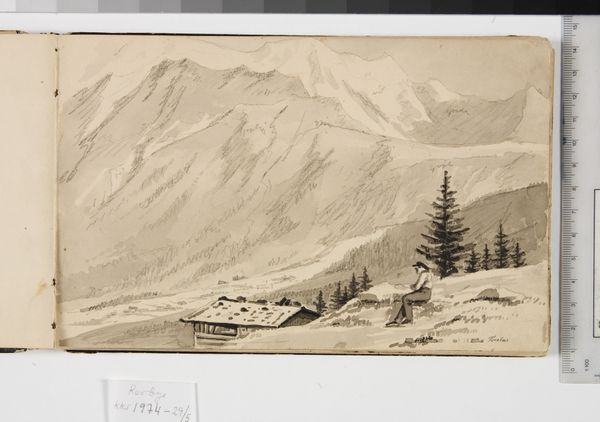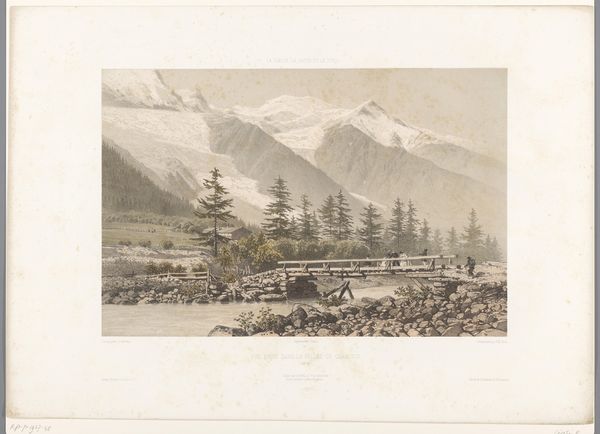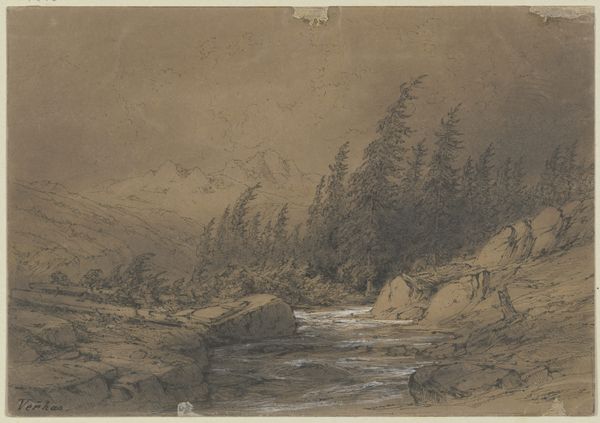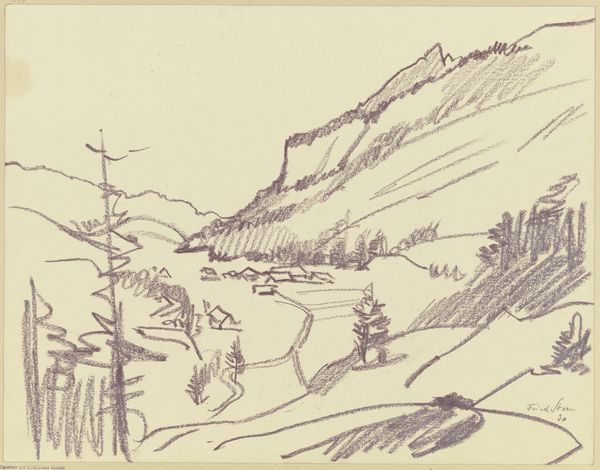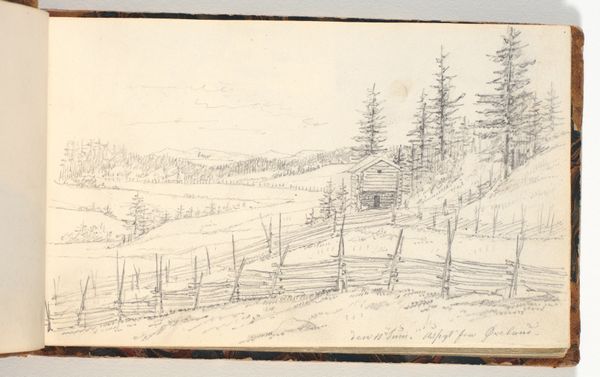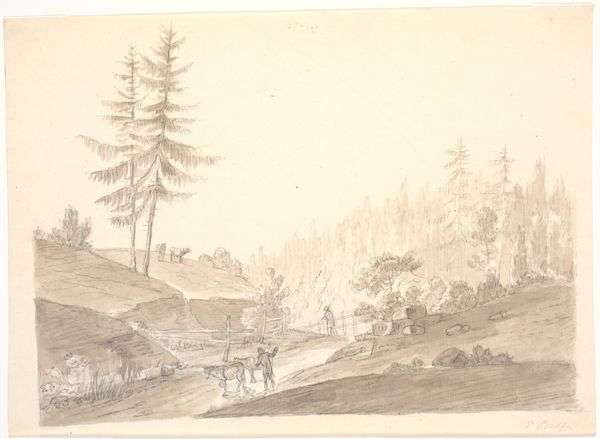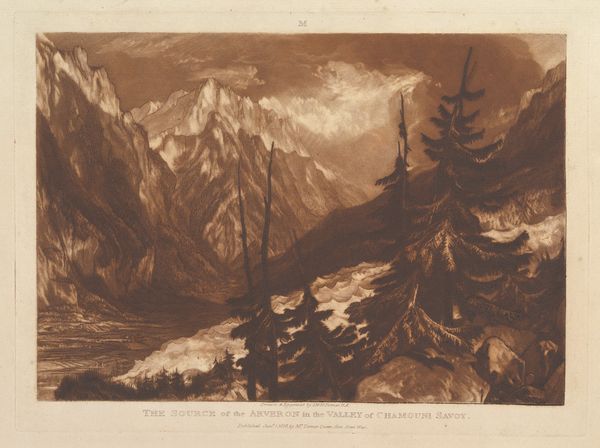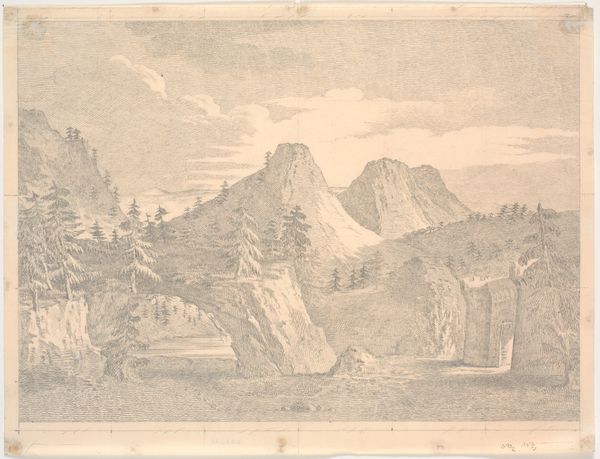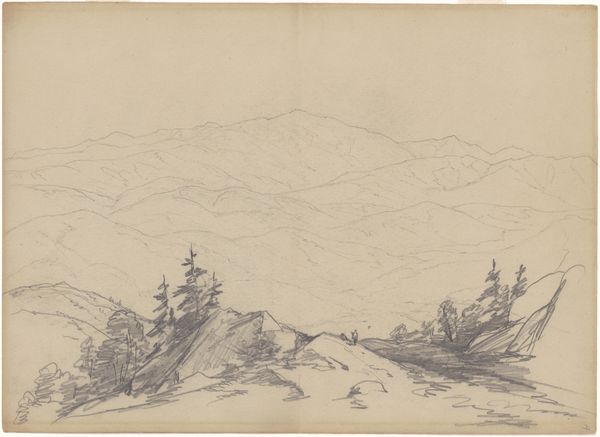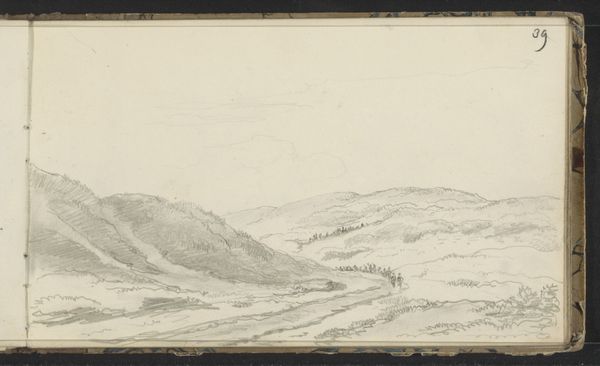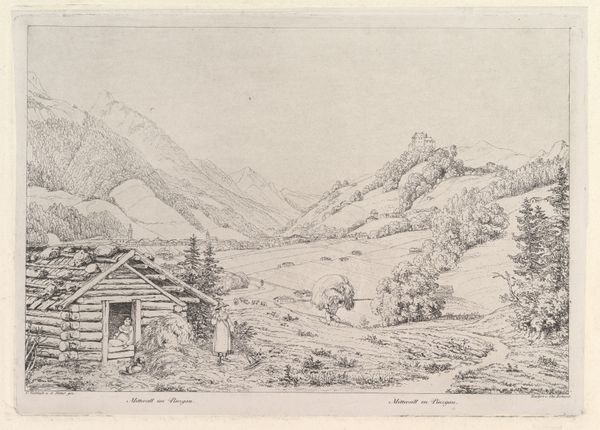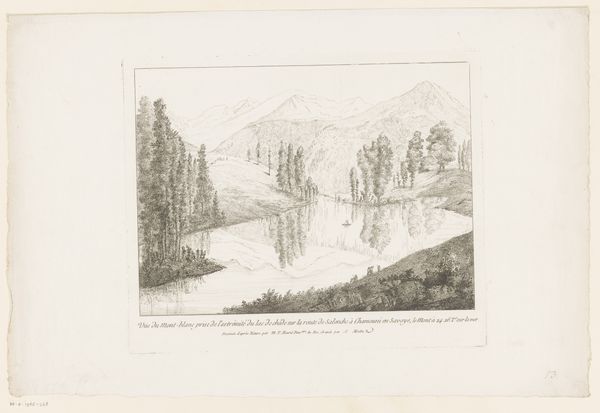
drawing, charcoal
#
drawing
#
landscape
#
charcoal drawing
#
romanticism
#
charcoal
Dimensions: 131 mm (height) x 208 mm (width) x 10 mm (depth) (monteringsmaal), 131 mm (height) x 208 mm (width) (bladmaal)
Editor: I am immediately struck by the atmospheric quality, almost a dreamscape, despite the relatively limited range of the charcoal medium. Curator: Indeed. What we see here is Martinus Rørbye’s “Alpelandskab,” or “Mountain Landscape,” created circa 1834-1835. He primarily worked in charcoal for this piece. You can see it here at the SMK, the National Gallery of Denmark. Editor: I see figures on horseback taking the winding road into the valley…who would have used these passes at this time, and what does Rørbye want us to feel about them, dwarfed as they are by the imposing mountains and silent forests? Curator: Well, travel and landscape as a subject during the Romantic period were deeply tied to ideas of national identity and access. Consider who the intended audience of landscape art might have been. Editor: So perhaps Rørbye is not simply depicting a scene, but engaging in nation-building, suggesting which social classes have a claim to the land itself? What sort of mining or trade made travel valuable? Curator: That is a strong reading, and a good segue to the material concerns here. Looking at this charcoal medium – how immediate it is, compared to oil painting, the speed and ease with which an artist could translate what they saw into line and shading on paper. But the raw material also signals something else, namely its wide availability to ordinary students. Editor: True – access. This connects directly to Romantic notions of the sublime; here's landscape accessible enough to travel through physically, as well as to depict using inexpensive material. Curator: Absolutely, this charcoal drawing offers an opportunity to rethink art making as labor for a more diverse populace, pushing the boundaries between art, craft, class, and nationalism. Editor: Precisely. And when you place it within the era’s sociopolitical landscape, this seemingly tranquil scene carries so much weight. It underscores the complicated relationship between humans and the environment, both a subjugation and reverence. Curator: Well put. Seeing it from the angle of the means of production also shows it within reach of a far larger base of practitioners. It certainly highlights the democratization of landscape as subject. Editor: These mountains may seem immovable, but this drawing captures a moment in which land, nation, and identity were actually undergoing radical shifts. Thanks for providing new material to work with today! Curator: A pleasure; Rørbye's attention to both subject and material helps us connect with the art of his era.
Comments
No comments
Be the first to comment and join the conversation on the ultimate creative platform.
